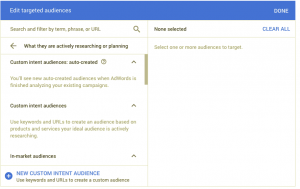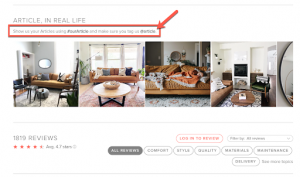— September 5, 2017

vanmarciano / Pixabay
A B2B website that is cohesive and concise in both messaging and visual design will create a lasting impact with visitors and help generate new client leads. To be effective, not only must the web design must flow well, it should tell a story about who you are and what value you offer to your clients.
To tell the story of your company within a B2B website design, it’s crucial that you make key decisions to help communicate your story effectively. Here, we’ll look at the most important decisions you must make while redesigning your firm’s website.
Determine Your Sales Strategy
Before you even start shopping for a website designer or agency, determine how you want the website to support your sales efforts. If you get most of your business through referrals and just want a credibility piece, your website will look much different than one that will serve as a lead generator or sell products.
Outline Your Budget Range
Your website is your 24/7 sales tool and the centerpiece of most B2B firms’ marketing and communication efforts. How you expect your B2B website to support your sales efforts will affect how much you budget for your web project. For example, if a website plays a critical role in lead generation for your sales team, it will likely require a higher budget to accommodate the functionality needed to attract, convert, and manage leads.
Choose Your Internal Project Team
Too many cooks in the kitchen are never good, but neither is having a junior marketing person run the project by herself. You want a small team, ideally of 2 to 4 people, that have the ability to manage the project, understand the company’s marketing and business objectives, and have the authority to make decisions. It’s critical that the team you choose does not get undermined by others in your organization as this can cause significant delays on a B2B website project.
Lay Out a Unique Value Proposition
Decide on a clear and concise unique value proposition for your brand. The very first message a potential client sees when they navigate to your B2B website is the value you offer to your clients. Your value proposition should tell potential clients why they should partner with your firm rather than a competitor. It should be specific, clear and free of worthless terminology. Check out examples of well-crafted value propositions.
Select the Appropriate Tone for the Copy and Design
Define what tone for the copy and visual design best describes your company and how you want to be perceived by clients. For example, do you consider your company culture and client relationships as “professional,” “contemporary,” “relaxed,” or “conservative”? Find a descriptive term that defines your culture. This will set the stage for how to create copy and visuals for your B2B website.
Choose the Bare Minimum of Information Needed
Determine the bare minimum of information, both textual and visual, that is needed to effectively communicate your message. Think realistically about the minimum amount of copy and design needed to express:
- Who are we?
- What do we do?
- Why is it important?
- How do we compare to other companies within our industry?
- Why should a client choose our firm?
This may not be an intuitive step in the web design process, but it’s a critical step in communicating to potential clients. It’s well documented that people now have shorter attention spans than goldfish, which means that website visitors don’t read or navigate for long periods of time anymore.
Creating a B2B web design that clearly communicates with visitors means the content should communicate who you are and why clients should work with you as succinctly – yet effectively – as possible. While you can always write longer copy and create larger websites, that doesn’t mean anyone is going to actually read it.
Pick a Desired Call-to-Action for Visitors
Next, you must determine what you want visitors to do once they are on your company’s website. How should people connect with your company on the website?
- Should they fill out a general contact form?
- Should they schedule a consultation?
- Should they request a demo?
- Should they request a quote?
- Should they download a guide or case study?
Decide on an effective call-to-action based on what you know is most important to your clients and what the next logical step is in the sales process.
Give Constructive, Specific Feedback
When working with a web designer or agency, the feedback you provide is important. The best feedback is constructive and specific. Saying, “We don’t like this,” doesn’t give any direction for the designer or copywriter to change the design or copy. Be sure to be specific about what you don’t like and why so they can better understand your thought process.
Specific feedback enables them to revise accordingly throughout the project and provide a website that is in line with your company’s vision. To accomplish constructive feedback in a timely and efficient manner, we advise having no more than three people in your company providing feedback and making final decisions.
Stick to Your Brand Sensibility
When making decisions about web design and content, it’s good to be objective, however, much of the time, it’s best to go with your gut. Capturing the essence of your company can be an emotional process and is often subjective. It is the job of the designers and copywriters to synthesize the feedback you provide into visuals and text that fit the tone you’re trying to communicate. If any design or copy elements don’t “feel” like your brand, don’t hesitate to let them know.
Digital & Social Articles on Business 2 Community
(93)
Report Post








